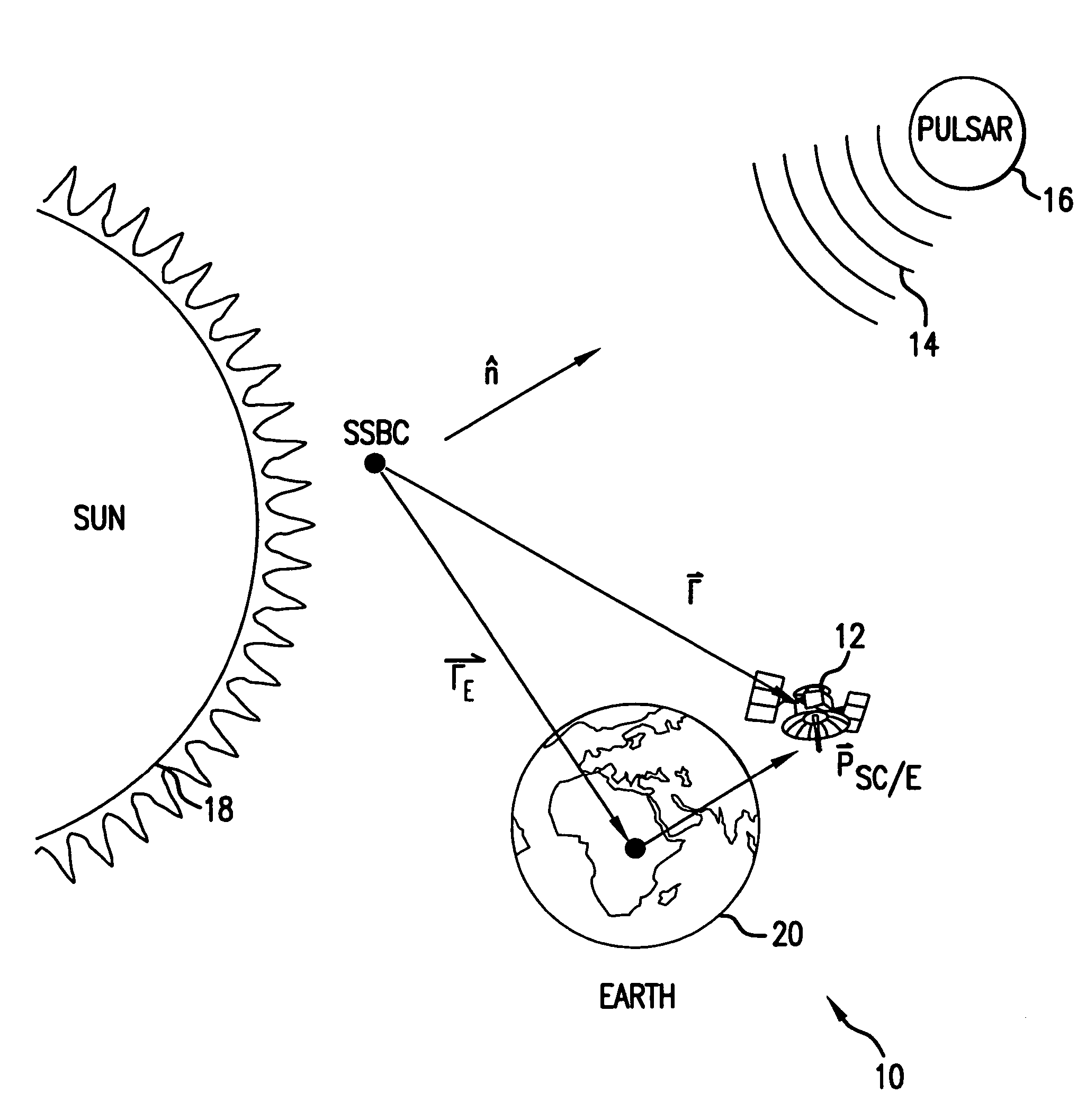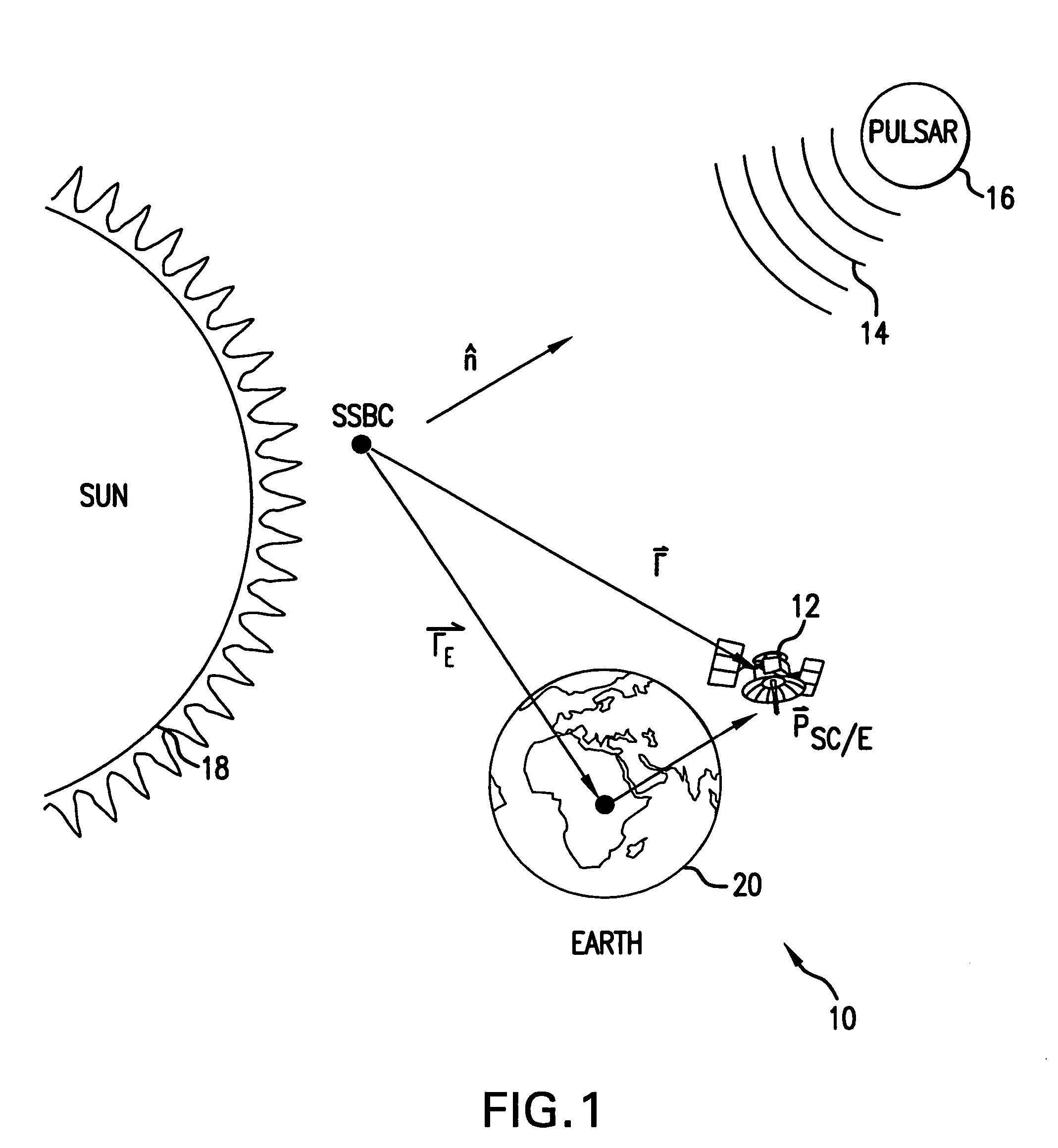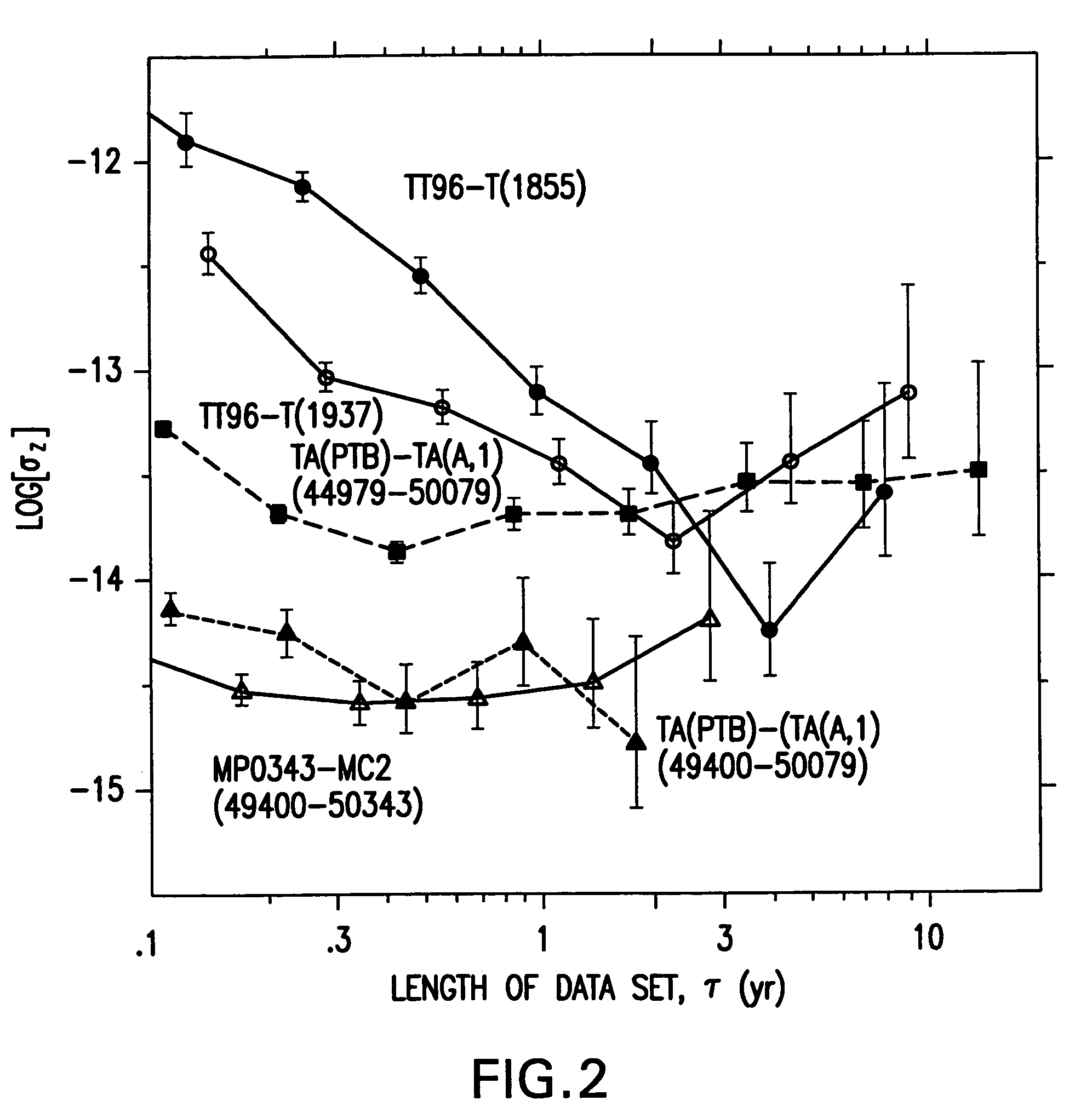Navigational system and method utilizing sources of pulsed celestial radiation
a technology of pulsed celestial radiation and navigation system, which is applied in the direction of optical radiation measurement, comonautical navigation instruments, instruments, etc., can solve the problems of only being accurate to a finite angular accuracy, affecting the trajectory of the vehicle, and increasing the error in navigational data
- Summary
- Abstract
- Description
- Claims
- Application Information
AI Technical Summary
Benefits of technology
Problems solved by technology
Method used
Image
Examples
Embodiment Construction
I. Overview
[0040]Referring now to FIG. 1, there is shown a navigational system 10 for calculating position data of a satellite 12 or other displaceable receiving platform based upon a signal 14 generated by a celestial body 16. Although shown in FIG. 1 as a pulsar, the celestial body 16 can be any celestial body or source of a pulsed electromagnetic signal.
II. Pulsed Celestial Sources
[0041]Although Earth-based navigational systems, such as the Global Positioning System (GPS) provide navigational data including time, latitude, longitude, altitude, and attitude of a body on Earth, such systems have a limited scope of operations for vehicles moving and operating relatively far from the planet Earth. The system 10, however, utilizes celestial sources, such as pulsars, to provide a stable, predictable and unique signature signal in order to operate and navigate beyond the influence of the planet Earth.
[0042]Pulsars were initially discovered by Hewish, et al. in 1968 during a sky survey o...
PUM
 Login to View More
Login to View More Abstract
Description
Claims
Application Information
 Login to View More
Login to View More - R&D
- Intellectual Property
- Life Sciences
- Materials
- Tech Scout
- Unparalleled Data Quality
- Higher Quality Content
- 60% Fewer Hallucinations
Browse by: Latest US Patents, China's latest patents, Technical Efficacy Thesaurus, Application Domain, Technology Topic, Popular Technical Reports.
© 2025 PatSnap. All rights reserved.Legal|Privacy policy|Modern Slavery Act Transparency Statement|Sitemap|About US| Contact US: help@patsnap.com



